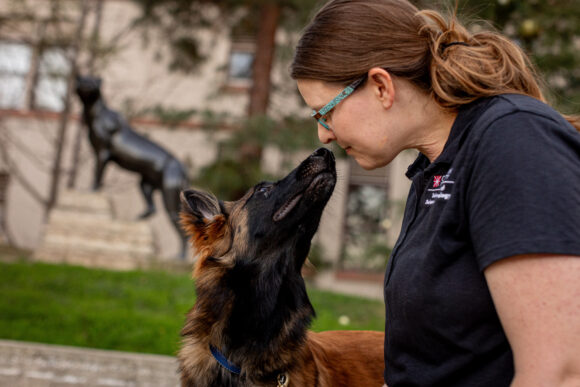
Could Your Lap Dog Make a Great Police Dog?
April 3, 2025
People have long held the belief that the shape of a dog’s nose and skull makes some breeds better than others at scent-detection work. Due to their long snouts, German shepherds, Labradors and Belgian Malinois have been considered optimal breeds for drug sniffing, bite work and bomb detection.
But does the shape of a dog’s skull and nose really impact its ability to perform certain scent-related tasks? A team of researchers at Chapman University decided to investigate this theory.
The team studied a series of skulls from museum collections across the country but could not differentiate between dogs that have been bred for scent work and those that are
bred for other tasks simply by looking at the skulls’ shape.
“This means that Chihuahuas and pugs are just as good at scent work as German shepherds and bloodhounds,” said assistant professor Lindsay Waldrop, co-lead on the project.
Their findings raise the question: if Chihuahuas and pugs are just as good at scent-related work, why does the police force continue to employ German shepherds and similar breeds for bomb and drug detection?
“Certain breeds are employed based on their personality and what motivates them, “postgraduate fellow Nicholas Hebdon said. “German shepherds are extremely motivated
to work. Greyhounds only care about running. Pugs just want their heads to be scratched.”
Dog selection is also partially informed by their historic associations and appearance. Waldrop hopes the research leads police training programs and the TSA to consider other breeds outside of those that have been traditionally selected. “For example, springer spaniels are easier public facing dogs that don’t bite and have great scent-detection skills,” she said.
Do you want to learn more about the latest research from Chapman? Read the new issue of Chapman Forward at news.chapman.edu/forward.

